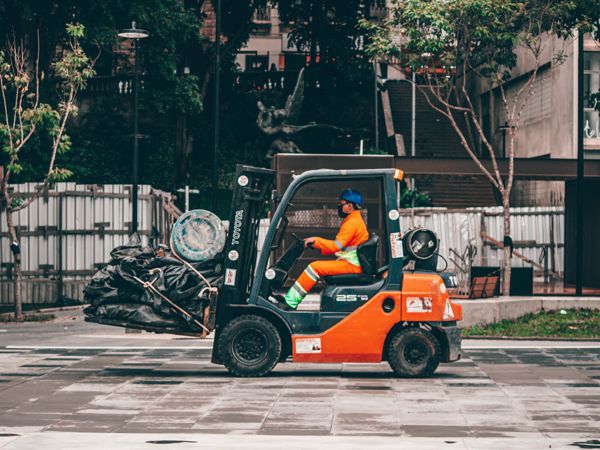Forklift Safety Toolbox Talk - Safety Checklist & Resources
Forklifts, also known as powered industrial trucks (PITs), are a common piece of equipment found at most job sites and industrial warehouses. While forklift types and applications can vary (learn more about different forklift types), each type comes with its own set of safety requirements. Understanding these differences is crucial for maintaining a safe working environment.
Although forklifts are generally less dangerous than large rough terrain cranes or excavators, they still pose significant risks that can lead to serious workplace injuries. According to OSHA, forklift overturns are the leading cause of fatalities involving forklifts, accounting for approximately 25% of all forklift-related deaths. In the United States alone, nearly 100 workers are killed and another 20,000 are seriously injured in forklift-related accidents each year (see NOISH report).
Diesel-powered forklifts are designed for outdoor use due to the harmful fumes they emit. Using them indoors without proper ventilation can be extremely dangerous. It's essential to follow safety protocols and ensure that any indoor operation is conducted in well-ventilated areas.
Many factories use colored tape to mark forklift zones, helping workers stay aware of their surroundings. Additionally, mirrors placed near corners allow operators and pedestrians to see each other even when visibility is limited by shelves or other obstacles.
Before lifting any load, it’s important to ensure it is centered and balanced. An off-center load can easily cause the forklift to tip over. Here are some key steps to follow:
Takeaway: The top image shows a properly balanced forklift load. The bottom image shows an imbalanced and dangerous load. Improperly balanced loads can lead to tipping and serious accidents.
When approaching a load, always do so slowly and carefully. Follow these guidelines:
Notes: Always stop 8–12 inches in front of the load to give yourself enough space to maneuver the forks safely.
The mast plays a critical role in maintaining load stability. Here are some key tips:
Notes: The mast should be vertical when approaching a load.
Notes: Tilting the mast forward increases the load's distance from the center of gravity, making it more unstable.
Notes: Tilting the mast back helps reduce the load's distance from the center of gravity, improving stability.
Notes: Make sure the forks are fully under the load and at least two-thirds of the way in. Avoid extending them too far to prevent hitting nearby objects.
Notes: Lift the load slowly and carefully, ensuring it remains balanced throughout the process.
Notes: Tilting the mast back helps stabilize the load before lowering.
#material handling
#forklifts
#toolbox talks
#construction
Tungsten Alloy Arrowhead For Archery Tungsten Alloy Arrowhead For Archery,Tungsten Metal,Tungsten Alloy Arrow Point,Tungsten Heavy Alloy Stabilizer Zhuzhou Jiuding Metal Technology Co., Ltd. , https://www.zztungstenheavyalloy.com
Handling the Forklift Load Preparation
Approaching the Forklift Load
Mast Position
Positioning Forklift Forks
Lifting the Load
Lowering the Load
Group Discussion Topics
Find Similar Articles By Topic